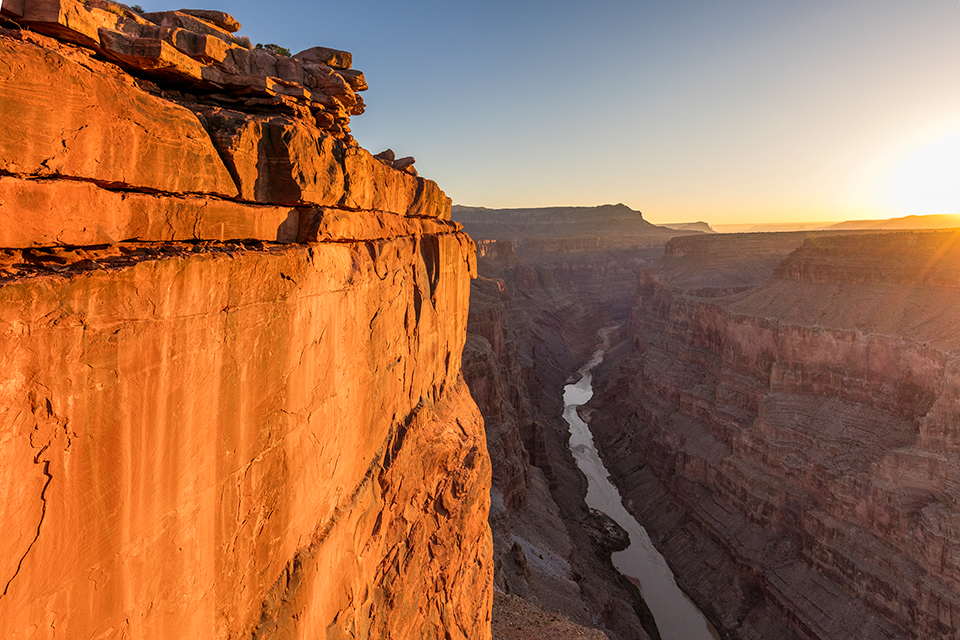Green after recent monsoon rains, Toroweap Valley spreads west, toward the Uinkaret Mountains. Rabbitbrush and sunflowers splash the remote expanse, more than 50 miles from the nearest pavement, with yellows and golds. In the distance, beneath a promontory of the Toroweap Cliffs, Toroweap Ranger Station’s metal roof flares with the reflection of the midday September sun.
During previous drives to camp at Grand Canyon National Park’s Toroweap Overlook, where the rim plunges 3,000 feet straight down to the Colorado River, I’d never seen the valley so green or appreciated its desolate beauty. Then again, I’d never walked this road before.
A couple of miles back, I left my buddy Tom Gamache cursing as he unloaded his prized 1972 Chevy Blazer, now balanced precariously on its driver’s side. To recap: We came over a blind rise and into a sloping “S” curve, the rough dirt road’s counterpart to one of the Colorado River’s rapids. Take a bad line or enter a rapid at the wrong speed, and you’ll flip. The same is true at this spot on the 65-mile route to the rim.
Cresting the hill, I knew we were in trouble. The Blazer caught sand along the right and overturned onto the passenger side, then bounced or rolled before landing hard on Tom’s door and sliding to a halt. The dislodged windshield lay shattered in a single piece nearby. We walked straight out through its frame.
Tom has a couple of cuts, and my arm is swelling, but we’re in better shape than the truck after the most turbulent 100 feet of its nearly 1.6 million-mile run. The last thing I heard as I set out for the ranger station was Tom: “There are just days in your life. That’s the end of the Blazer.”
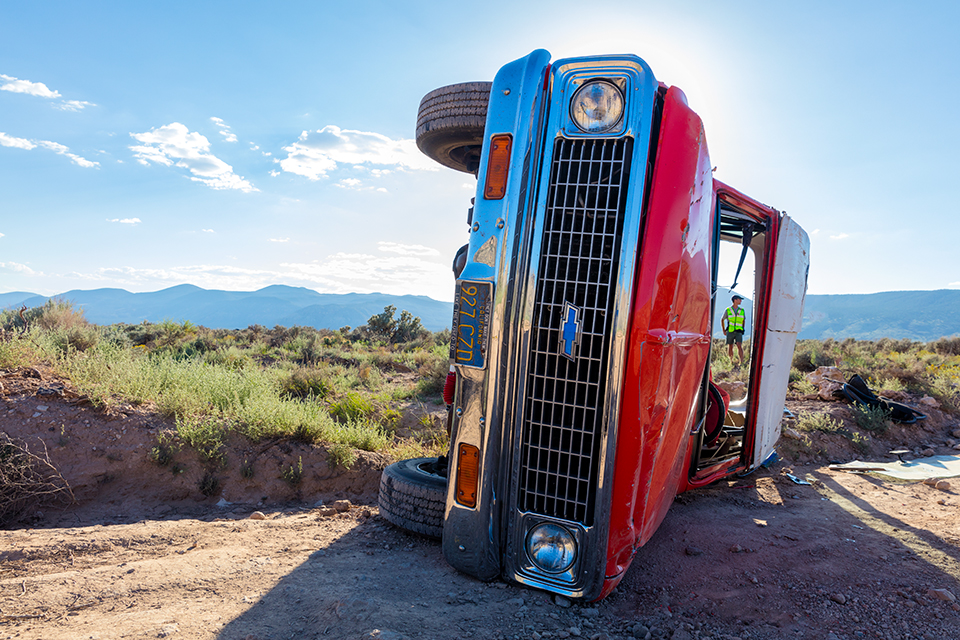
I step over cattle guards and try to gauge whether the desert light is making the ranger station, among the most remote postings in the National Park Service, appear closer than it actually is. After 3 or 4 miles (it’s hard to say), a motorcyclist comes up behind me, then goes ahead to alert the ranger.
In a few minutes, someone on a mountain bike approaches from the station. He’s coming fast — not coasting on the downhill, but with legs pumping hard and in perfect cadence. Soon, I’m describing the accident to Todd Seliga, Toroweap’s ranger, before he pedals back, grabs his truck and drives to the Blazer.
According to the Tao of Tom, “you don’t want to meet anybody on the road.” That’s his way of saying something has probably gone wrong if you unexpectedly find yourself talking to a stranger by the side of the road.
Maybe so. But I sure am happy to meet Todd Seliga.
“So, whaddaya know about Riffey?”
This journey began a few years ago, in my mother’s Tucson apartment, when UCLA professor emeritus of biology Henry “Harry” Thompson asked me about legendary Toroweap ranger John H. Riffey.
Now 95, Harry was my mother’s constant, loving companion in her final years, during what came to be her “second spring.” In the 1970s, Harry traveled to Toroweap (“Not an easy place to get
to — you don’t go through there on the way to somewhere else”) to search for a new species of encelia, a desert shrub.
I told Harry that I knew only slightly more about Riffey than I did about encelia. But if ever a man and a place were inseparable, that was Riffey and Toroweap, where he served from 1942 to 1980.
When Harry met Riffey, the ranger’s spirit immediately impressed him. “He was just a charmer, smiling all the way,” Harry explained. “Get lost? Forget your lunch? Riffey would take care of you. He thought everyone had a right to go out there and experience the area where he was the expert. So often, you have a guy who wants to shut a place down — he treats it like his private possession. But Riffey was not a grumpy guy at all. He welcomed everyone into his house, then got to know and remember them.”
Harry spent time with Riffey and his wife, Meribeth, an ornithologist. They shared fresh-baked cookies and brewed a pot of coffee as Harry described his fieldwork. Harry so liked Riffey that he decided to name the new plant species after the ranger. But the directions Harry carried from previous researchers sent him to the wrong spot by the rim. Harry never did find any specimens of what would have been Encelia riffeyi.
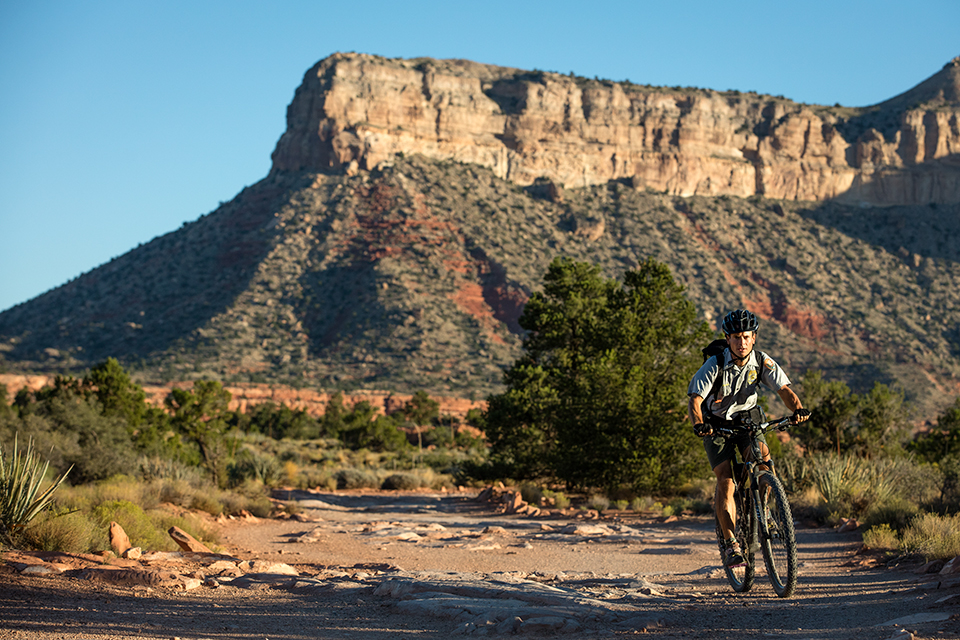
I wanted to explore Riffey’s world and talk with Seliga about his experiences at Toroweap (the Park Service calls it Tuweep, but the two terms are used more or less interchangeably). Rangers have worked there since the 1930s — when this area on the Arizona Strip was administered separately from the park, as Grand Canyon National Monument. For eight years, Seliga has covered a vast country: 500,000 acres, including a 140-mile stretch of the Colorado River.
Seliga is a throwback to the classic age of rangers. Visitor contact (and emergencies like ours), range management, monitoring archaeological sites ... they’re all part of the job. Seliga acts as a naturalist, and the pistol holstered on his hip is a reminder that he’s sometimes the law, too.
“I’ve always been self-motivated and independent. I’m perfectly happy by myself, but I also love my time with people,” the Boston-area native says. “And I like serving and making a difference.”
Seliga is 38 and looks younger. He’s tanned and impeccably fit, with tightly braided muscles in arms and legs sculpted from rugged backcountry patrols on foot, mountain bike and river raft. His handsome face frequently brightens into a sweet, easy smile. He’s cute as nails.
Seliga interned and worked at Jewel Cave National Monument in South Dakota. He quickly fell in love with the work, then did stints at Yellowstone, Yosemite and Saguaro national parks, among others. He never wanted a job at the Grand Canyon, ironically, because he didn’t think it offered many trails or much hiking.
While he sometimes surveys his turf from Park Service aircraft, Seliga mostly goes out on his own, self-powered. He’ll hike 20 miles down a side canyon to reach the Colorado, then set out by river for another 20 miles, in a pack raft that compresses to the size of a water bottle, before trekking back to the rim and repeating the process. Seliga competed nationally as a mountain biker and can cover 100 miles in a day. But the Grand Canyon’s topographical complexity means his patrols are never the same. “When I’m on foot, some days I might cover 30 miles,” he says. “On others, it might take me all day to go 1 mile.”
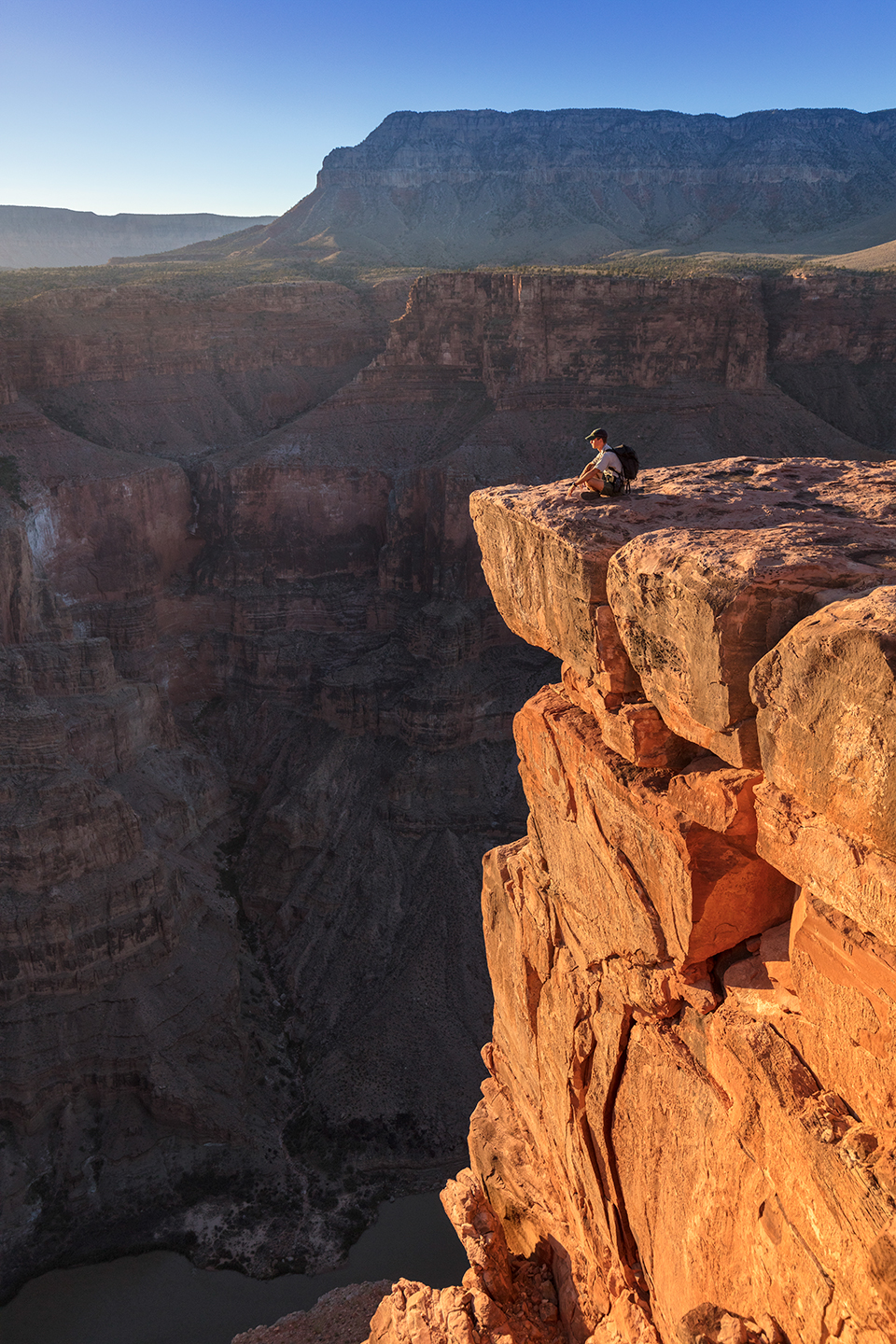
Today, there will be no exploring, just trips to shuttle our gear and long waits by the Blazer — first for the Mohave County sheriff, then for a wrecker out of Fredonia. I cool off inside Toroweap’s barn with a crescent of sweet watermelon that Seliga has offered (he’s just restocked on food after going into town) and talk with Miki Magyar, a volunteer from Boulder, Colorado.
She and her husband, John, first met Seliga out in the backcountry and are spending a month at Toroweap. Through the barn’s big doors, Miki and I look across the valley. Whenever anyone approaches the station on the way to the rim, Miki greets them and provides information.
I wander around Toroweap, which has undergone numerous improvements during Seliga’s time. Built of local stone in 1935, both the barn and the ranger cabin have new roofs that volunteers and Park Service workers installed. Generators, first diesel and then propane, once powered the station, but now an eight-panel solar array provides the necessary juice.
Climbing toward a saddle above the cabin, I check out the nearly 10,000-gallon rainwater catchment system, which volunteers updated in 2014 after hauling 10,000 pounds of half-inch corrugated steel sheets up the slope. I continue to a higher point, then look back to see two plumes of dust, one moving toward Fredonia and the other approaching the station, as Tom and Seliga return just before night falls on Toroweap Valley.
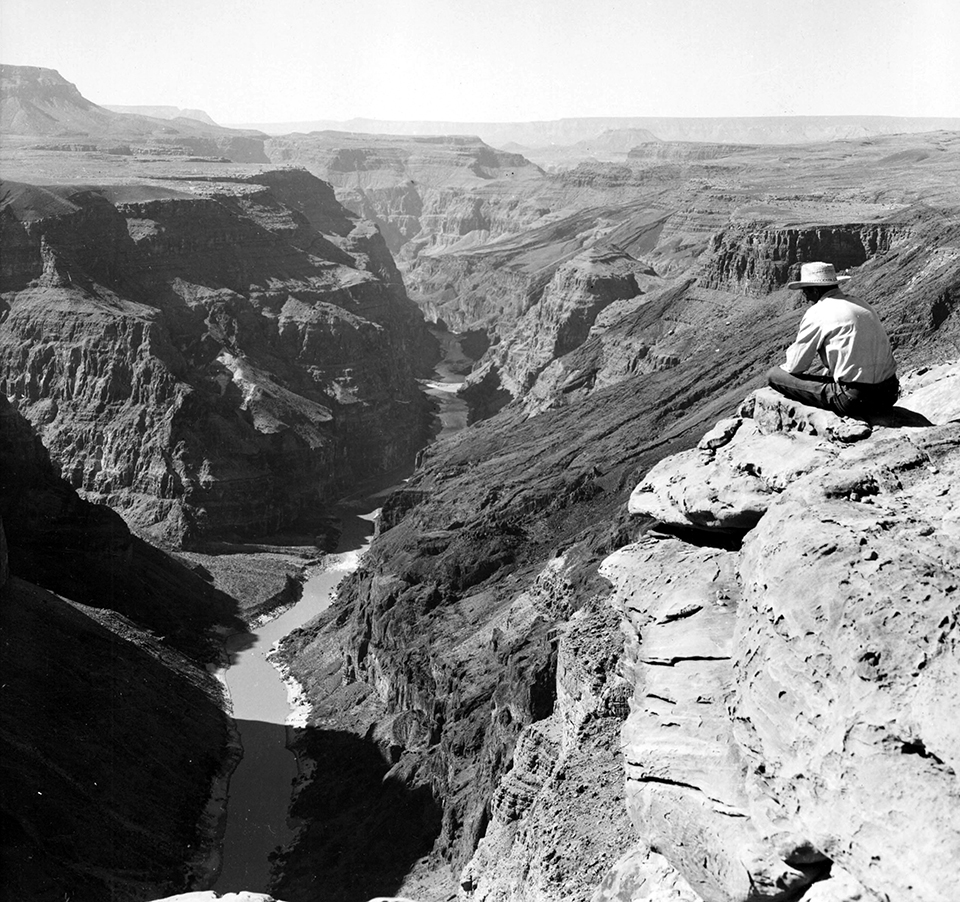
Though Encelia riffeyi wasn’t meant to be, Riffey nevertheless achieved a measure of immortality through the loving, often laughing memories of those who knew him. I found the biography John H. Riffey: The Last Old-Time Ranger, by Jean Luttrell, and also sent a copy to Harry. Later, I tracked down transcripts from the John Riffey Memorial Tall Tale Rendezvous, a 2001 event organized at Toroweap by Liz and Clair Roberts, the station’s rangers until 2002.
A native of Mancos, Colorado, Riffey earned a master’s degree in forestry and range management, then worked for the U.S. Forest Service before arriving in Toroweap Valley at 31 years old. He was no company man: I’ve never seen a picture of Riffey in uniform. If you’d come upon him, typically in a plaid or checked shirt and wearing his white straw cowboy hat, you’d have assumed he was a local rancher. Riffey remained more committed to Toroweap and its people — the ranchers whose families had lived here for generations, along with first-time visitors — than to any bureaucracy. He resisted all efforts to transfer him, and eventually, the Park Service gave up trying.
“In many ways he was like a shepherd,” wrote friend Gene Wendt in a tribute from the Rendezvous. “A stern guardian on one hand, and gentle, kind-hearted caretaker on the other.”
Riffey learned to fly, then searched for wildfires, poachers and wayward cattle in “Pogo,” a single-engine Piper Super Cub perpetually plagued by nesting mice and named for the many short hops the ranger flew over his domain. Pogo and Riffey managed to avoid any serious mishaps while taking off and landing from what he dubbed an “international airport” — the dirt airstrip a short distance from the station. Riffey put up signs designating gates 1 and 2, as well as the north and south concourses, of what was just a wooden shed he built to protect Pogo.
Riffey could certainly riff. The Rendezvous transcripts offer a long glossary of his terms and sayings. When visitors asked for plant identifications, Riffey called flowers close to the road “nearodas,” while those in the distance were “farrodas.”
“Rancid Roy” was a skunk who lived by the ranger station. And in 1976, when visitor Jim Stiles mentioned that he knew Edward Abbey, the author of The Monkey Wrench Gang, Riffey said that he might even try some monkey wrenching himself if it meant keeping the Toroweap road free of asphalt. “And if that doesn’t work,” he added, “they’ll have to pave the road over my dead body.”
Riffey never wanted to leave, and according to Luttrell, Meribeth purchased land in the valley for a cabin where the couple could live after he retired. Riffey also said that if he ever fell ill, no one was to call a helicopter until they were 100 percent sure he was dead.
In July 1980, Riffey’s heart gave out. He died before reaching pavement.
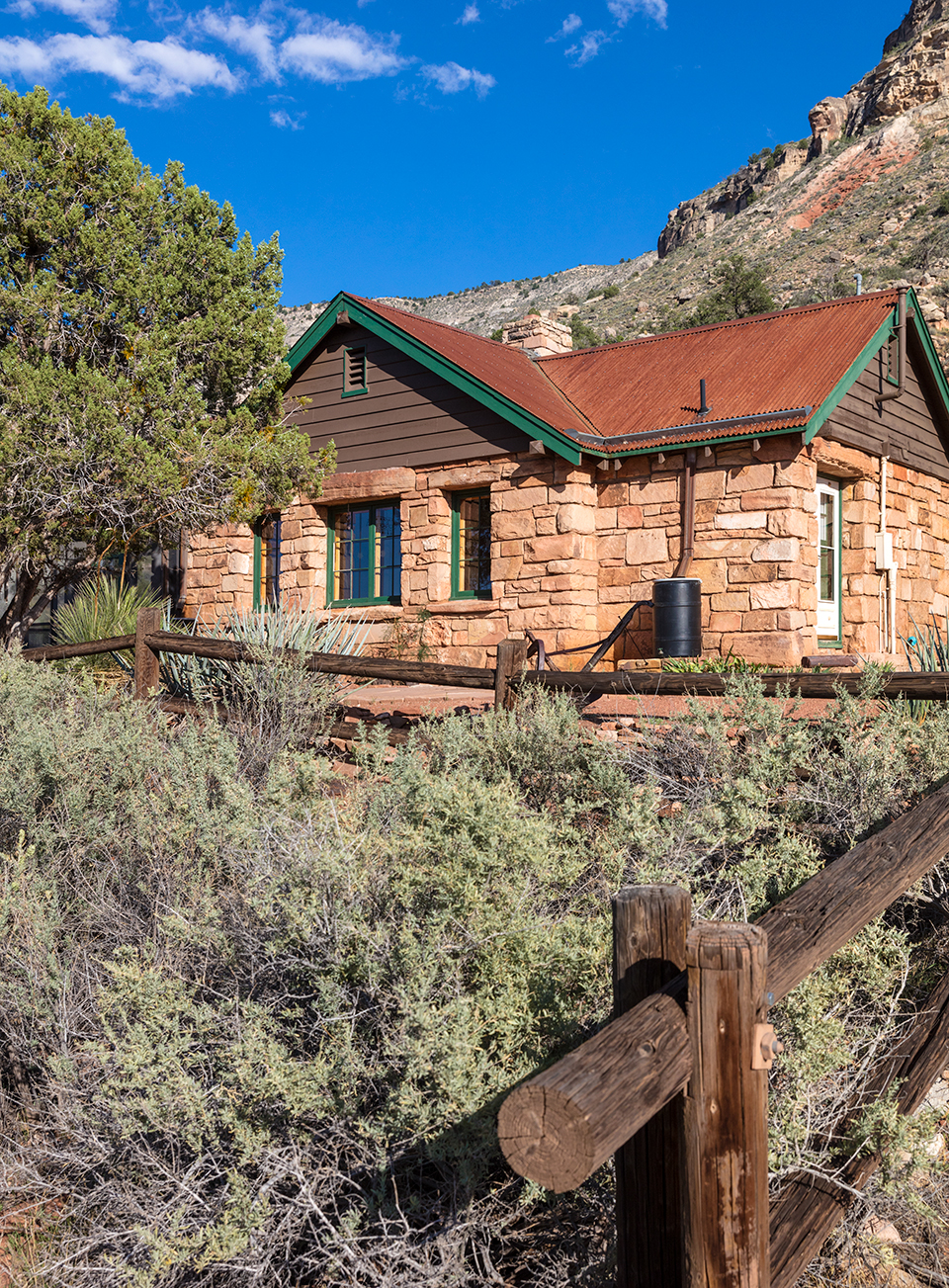
If Riffey left this world somewhere on the road between Toroweap Valley and civilization, Kaelin Zielinski nearly entered it here. For almost nine years, starting in 1988, her late father, Ed Cummins, served as ranger at Toroweap along with her mother, Cathy Alger — who still works for the Park Service, at Pipe Spring National Monument near Fredonia.
In June 1989, Alger went into labor out at Toroweap. The couple loaded son Eli, still under 3, and their dogs, Zack and Bear, into the car for an anxious, bumpy two-hour drive out through Colorado City to reach a St. George, Utah, hospital.
“We were known as the feral children of the Park Service,” says Zielinski, who lived at Toroweap until she was nearly 8. She and Eli led an idyllic existence connected to their natural surroundings. Often barefoot, they played cowboys and Indians, and built a fort among the rocks. They grew up aware, not fearful, of the rattlesnakes, tarantulas and scorpions common at Toroweap. Zielinski remembers “talking” to coyotes by standing on the picnic table and howling into the valley’s emptiness.
Their parents trusted her and Eli, and placed few limits on what the children could do. “It was cool because there were no boundaries,” Zielinski says. “Their attitude was: ‘Come back home. Don’t die.’ ”
Even with the nearest groceries a four-hour round-trip away, and even though she had to clean diapers in an old-fashioned wringer washer, Alger says Toroweap was “just a delight.” With a steady stream of rim-bound visitors from all over the world, the station hardly felt isolated, and the couple used Toroweap as a classroom as they home-schooled their children.
Curiosity and exploring became a way of life. From a young age, Eli rode with local ranchers on roundups and now works as a packer at Yellowstone, while Zielinski has a job with the Wildland Trekking Co., a Flagstaff outfitter.
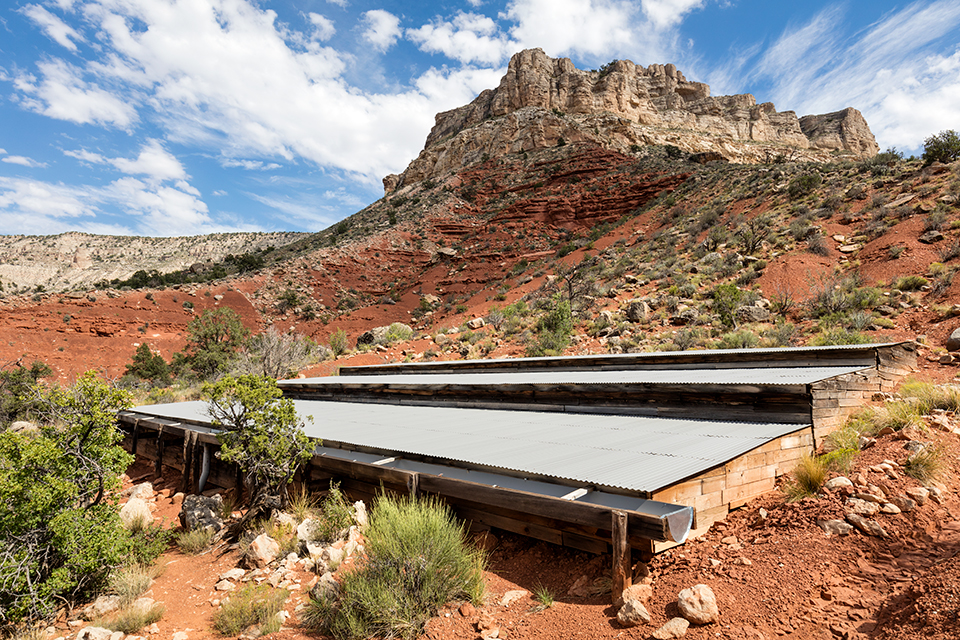
Eventually, the family, concerned that the children needed more chances to socialize, finally moved. Ed took a job at Lees Ferry. “There was drama and trauma and tears, but it really was time,” Alger says.
“I was leaving the only home I had ever known,” Zielinski says. “I have a very specific image of turning around in the back seat and watching the cabin disappear in the distance. I cried my heart out.”
Riffey would have understood.
With the battered Blazer in Fredonia, Tom and I aren’t leaving Toroweap tonight. We won’t make it to the rim, and I’m disappointed to be so close, yet still miss one of my favorite places.
But if the overlook and its famous view belong to the world, the station belongs to the remarkable group of people — from Riffey to Seliga — who have called it home. “I used to be drawn to the big, dramatic Canyon views,” Seliga says. “After being here for so long, it’s the valley that means the most to me.”
I unroll my pad below the cabin and orient it for the best view of the sky over Toroweap Valley. Then I can’t sleep. When I shut my eyes, the accident repeats like a GIF in my head. And I can’t resist checking the sky. The night is without clouds, the stars brilliant, and I wait for total darkness to come once the quarter-moon sets.
Doze. Wake up. Repeat. Finally, I open my eyes to the Milky Way smeared across the moonless sky. Shooting stars break the stillness, and twinkling red-eyes out of Las Vegas move like spacecraft across the universe, silent, until sound catches up to light.
Around dawn, we gather at a table by the antique drill press that Riffey installed in the barn. Seliga offers clusters of wild grapes dropped off by locals before we walk around the property.
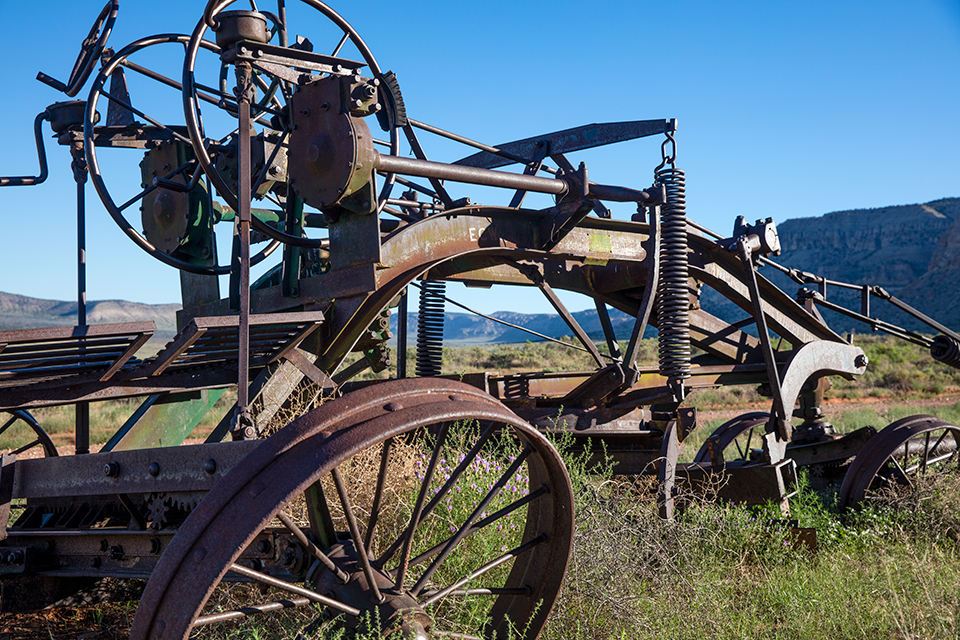
Riffey is inescapable. There’s his hand-painted sign for Grand Canyon National Monument and a caricature in the cabin of Pogo and Riffey with his fist raised; the caption reads, “Doggone tenderfoot tourists!” Seliga points out the porch Riffey added onto the cabin and a stone root cellar he built behind it.
Like Riffey, Seliga has found his place in the Arizona Strip community. He has family ties here: One of his maternal great-great-great-grandfathers was Mormon pioneer Jacob Hamblin, and another operated the sawmill on Mount Trumbull. He’ll stop to talk to ranchers moving their cattle from pasture to pasture, and he attends big events such as the Bundy family’s recent 1,500-person reunion. “Kindness was Riffey’s religion,” Seliga says. “Because of his generosity, people wouldn’t do things that were offensive or destructive to the park. They wouldn’t want to disrespect Riffey.”
Seliga understands he works in a region that’s far from fed-friendly. I mention that we saw big shotgun blasts in the sign for Grand Canyon-Parashant National Monument. He’s had his moments, including a life-threatening encounter, and has tried to build a rapport with those in the area. “You only worry about the people who don’t know you — who see you as a uniform, not as an actual person,” he says.
While Tom organizes his gear for the trip to St. George, Seliga and I walk past the 1921 road grader that Riffey nicknamed “Big Scratchy” on the way to his and Meribeth’s gravesite. Riffey said he wanted to be stuffed and put in a rocking chair on the cabin’s porch, then given a push every now and again. But I’m guessing he’s pretty happy at this spot overlooking the valley.
I unlatch an ammo box that protects a tribute book placed here in 2000 by Clair Roberts and flip it open to a page that reads, “Thanks John for the homemade cookies back in 1967.” Then I write a note to Riffey and mention that Harry sends his regards.
Riffey’s gravestone is engraved with an image of Pogo soaring along the Canyon rim. The inscription reads, “A man who could spend a lifetime on the rim and not waste a minute.” Words to live by, especially when everything can change in an instant.
